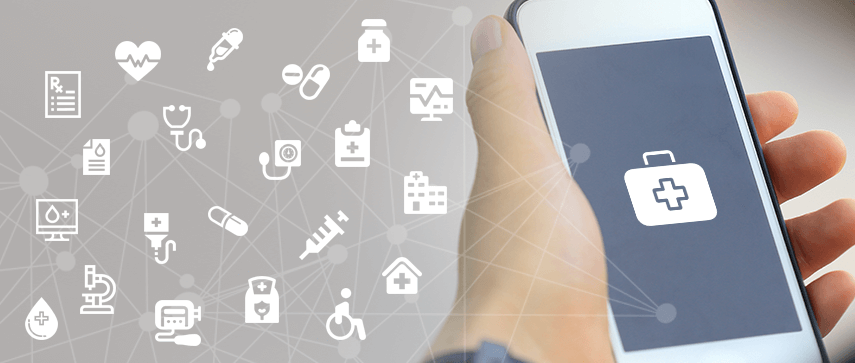The healthcare industry is emerging with an unprecedented level of transformation. The rise of consumerism is one of the key reasons behind the evolution of healthcare sector. Consumerism plays a crucial role in the healthcare business by encouraging patients to become true consumers of healthcare. Resultantly, the healthcare industry is now evolving from sick-care industry to a consumer-driven industry where consumers are actively involved in their health decisions.

Today’s patients have more capital at stake, more options to make decisions, and more knowledge to consider than ever before. Patients are now aware of their consumer rights and thus, are capable of making the best decisions for their health, considering the quality and cost of healthcare services like they do with other commodities.
The three key factors driving the patient towards healthcare decision making are – the emergence of health insurance products; the evolution of private and public insurance exchanges; and the propagation of websites and tools offering transparency into price and quality.
Now, healthcare providers are expected to give more details to the consumers in the market. Patients are more attentive while choosing health services and are more aware of medical billing, multiple healthcare technologies, and payment systems. So, they approach for medical treatments with great concern and look for services and tools that are synced according to their health and lifestyle.
Both healthcare providers and consumers play an essential role in healthcare consumerism as patients expect reliable products, high-quality services, and better experience from the healthcare providers. When consumers spend on healthcare treatments, they preferably search for healthcare providers catering easy to use and reliable billing and payment systems. Therefore, healthcare consumers and patients hold complete control over how and where their money gets spent.
Impact Of Healthcare Consumerism On The Market

In the present scenario, consumerism in healthcare encourages patients to make their own medical decisions & manage their health. Still, most of the consumers feel that they don’t have the proper information and tools to do so. Unlike other industries, the healthcare sector contains a huge range of choices, service flows, and contact points with uncertain pricing. Sometimes the process of selecting and paying for health services becomes so confusing and unclear that consumers often decline medical treatments to avoid high expenses and complications.
To make better healthcare decisions, consumers are expecting and demanding better information and transparency from providers. Therefore, providing the best healthcare services with affordable pricing has been in the cross-hairs of the healthcare providers. Patients often ask for an interactive relationship than a one-way conversation from a healthcare provider.
The driving force of this healthcare transformation is nothing but the competition created by the consumer. These consumers always search for the best quality along with the best price for almost every healthcare service. As a result, healthcare providers are bound to provide cost-effective products while enhancing the quality of their services, which is a significant reason behind intelligent business processes and improved business models. Consumerism in healthcare has encouraged healthcare providers to embrace flexibility, speed of change and adaptability in their services to survive in this competitive environment.
Let’s see the key implications of consumerism on healthcare –
1 Affordability
Consumers making their own health decisions usually have a clear vision of how and on what they are supposed to spend their money. Resulting, healthcare providers stand upfront to these consumers with the best pricing arrays. The affordability of healthcare services emerge as one of the most demanded consumer needs. Decreasing this healthcare affordability is simultaneously increasing consumer accountability. Many consumers are making decisions that show their increased consumer accountability for health and well-being, emphasizing their sleep, healthy diet, medical screenings, and exercise.
2 Continuity
Usually, patients with chronic diseases avoid undergoing long medical treatments due to huge expenses and unceasingly going treatments. As a result, many consumers are unable in continuing their medical treatments and fail to maintain their healthcare ecosystem. Many times consumers having health and medical insurances neglect at paying their regular insurance bills which turns into a key reason behind failed continuity in healthcare from the patient’s end.
Consumerism in healthcare overcomes this situation by enabling patients to access the proper information of their treatments and the expenses it requires before even beginning the procedure. It helps consumers to choose the best service and insurance provider and avoids the discontinuity in the treatments.
3 Digital Involvement
Digital engagement is playing a vital role in consumer decision-making. The involvement in digital consumerism is rising with the increasing number of consumers using digital healthcare services and tools. The interaction and relationships consumer has with tech-focused innovative companies like Amazon, Google, and Apple strongly suggest that they are looking for better innovations in healthcare services. It is more critical than ever that providers in the healthcare industry embrace these digital advancements and tailor their services to offer the digitized experience consumers expect.
4 Engagement
Consumers want to get engaged in solutions to reduce healthcare costs and get better healthcare services. The rise of consumerism in healthcare limits healthcare organizations from being better in their advertisements than they are in reality. Healthcare marketers are integrating operations and communications to improve their brand value and patient experience. If worked cross-functionally, it will become easier for healthcare organizations to analyze the patient’s reactions to the healthcare experience and improve their services if required.
Leading Trends In Healthcare Consumerism
Though in the early years, consumers got begrudgingly nudged by regulatory mandates and cost-based purchasing models, the patient experience has transformed healthcare delivery dramatically. With the emergence of high-deductible healthcare plans, cost-sharing models and health insurance exchanges, healthcare consumerism has experienced steady growth in the industry. Consequently, the voice of consumers has taken center stage.
Number of hospitals and healthcare providers are trying to enhance their service quality and provide the best treatments to the consumers. Hospitals that adopt the waves of change maintain a financially sustainable position in this era where cost-effectiveness and patient satisfaction are the most valuable and demanded attributes. Healthcare organizations like HHS (Health and Human Services), WHO(World Health Organization), distinctive private firms and some healthcare investors are helping in distributing cost and quality of care data.
The Internet has proved itself as a notable disruption in improving patient experience. Patients can easily analyze the wealth and quality of services by reading online reviews posted publicly about healthcare providers. With the help of various websites and mobile applications, getting healthcare information with one click has become very handy for patients. These technology trends are effectively driving decision making in the healthcare sector.
There are multiple trends that are emerging from an approach toward consumer-driven healthcare. Let’s put a light on a few of them :
Telehealth
In the early 1980s, telehealth had emerged as a consumer-driven system of healthcare delivery. Telehealth encompasses an array of devices and technologies that are capable of transmitting real-time medical information around the globe, enabling healthcare providers to offer services to the previously underserved communities. Currently, it is often used for public and private healthcare professionals providing treatments of mental illness, saving lives in an emergency, treatments on chronic diseases and enhancing long-term health outcomes after a major stroke. Let’s see how telehealth affects the healthcare industry :
i. Telehealth Brings Expertise To All AreasUsing medical devices to monitor consumer’s health from a distance has emerged as a new level of convenience for patients and healthcare providers. This helps in serving in-person visits to a medical practitioner and regular doctor visits from afar, creating a more extensive treatment plan. It also enhances the quality of care that would otherwise be unavailable.
Let’s understand this with an example – providers having no experienced team may fail to manage the treatment in the midst of a stroke but telehealth can help them with virtual consultation from someone who can analyze the patient’s health and provide the right treatment at the right time.

ii. Telehealth Assists People With Limited Access To Specialized Care
Telehealth comes up with the ability to provide immediate access to the treatment and care which is much more difficult to obtain otherwise. Populated communities living in rural areas do not get medical treatments due to lack of healthcare infrastructure. So they have to drive their patients to the hospitals which are not always possible in emergency situations. Telehealth overcomes this by providing an alternative way that connects consumers and practitioners. Resulting, patients in such rural areas can get quick treatments and access specialized care.iii. Telehealth Is Practical And Relatively Inexpensive For Patients
Generally, consumers have a misconception that as telehealth represents advanced and top-notch technology, telehealth services are also expensive. Earlier, telehealth services struggled to gain traction as people were rarely reimbursed with its services but now telehealth is rapidly changing with better features and services. A large number of insurance companies and hospitals are reimbursing their services with telehealth. So telehealth has emerged as a cost-effective and trustworthy system among the consumers.Patient Empowerment
The leading healthcare organization, WHO defines empowerment as “a process through which patients gain greater control over decisions and actions affecting their health”. This has successfully evolved as a new paradigm. Patient empowerment is a process through which consumers obtain a stronger hold over decision making and actions on their medical treatments. By encouraging patients to take overall responsibility for the management of their treatment enhances the healthcare services and outcomes as well as effects on cost-effectiveness.Wearables
As the approach towards digital consumerism in healthcare is settling up, modern and tech-savvy consumers are looking for first-class and convenient healthcare services at affordable rates. Wearables are transforming from being simple fitness trackers to real-time medical monitors. Fitness trackers, smartwatches, movement sensors, wrist bands, wearable patches, and smart footwear are emerging as an advanced healthcare solution for the future. Real-time sensors in these wearables collect patient data and transfer it to the practitioners for monitoring medical conditions. These devices are emerging as a key propagator in healthcare with the advancements in AI solutions.

Challenges In Healthcare Consumerism
With the constant evolution in healthcare consumerism, the communication between patients and doctors can get negatively affected. Usually, it becomes very difficult for doctors and healthcare practitioners to eliminate the misperceptions held by the consumerist patients having minimal knowledge about the disease. Apart from that, many times doctors engender negative feelings impacting respect for their profession. As a result, these medical practitioners have mixed and confusing feelings discussing the treatment web-based medium.
Generally, the conflicts happen when consumer’s misconception does not meet with the physician’s assessment. Patients might discount and misunderstand what they hear from the doctor even after a conceptual exchange of information. This often happens when patients undergo well-established medications like cancer, chronic diseases, etc. Such confusing beliefs lead to poor patient adherence.
So, consumerism can increase the probability of disagreement, mutual frustration affecting the communication between patients and doctors along with the ineffective use of patient-doctor visit time.
Opportunities For Consumerism To Improve Care

Even with the increasing demand of consumerism and strong competition for patient loyalty, healthcare organizations are not taking firm steps toward adapting consumerism in healthcare. Along with the above-mentioned challenges, consumer-centric healthcare has huge scope for improvement – like adopting digitalization, thinking about external perspectives and analyzing the fundamental services. This obviously involves the good care of consumers by treating them as decision-makers for their own health. Therefore, consumer centricity is an essential aspect of the modern era of active and advanced consumers.
Enhancing health systems and commoditized medication plans justifies that consumer engagement is a key aspect through which consumers select their system, healthcare plan, and medication type. The investors are expecting high value for the systems and medicine manufacturers, to drive consumer centricity among the patients by changing their behavior and simultaneously minimizing the healthcare costs.
Three Areas to Address Healthcare Consumerism
Clinical, administrative and financial are three key aspects of consumerism. In the recent few years, providers and investors have achieved significant success in administrative and clinical aspects. To overcome the challenges in consumerism, healthcare providers must focus on improving the financial side of healthcare consumerism.
Wrapping Up
With the transformation in consumerism in healthcare, the internet, and web-based services have become a myriad of info sources. Patients are continuously educating themselves about their health conditions, medication availability, and healthcare services. The Internet provides a wide source of advanced data for disease-related information to medication options and alternatives.
A strong association is developing between patients and medical practitioners along with the improvement in patient experience, consumer engagement, and medical outcomes. Generally, enhancing patient experience and consumer engagement is a difficult job for healthcare providers but consumer-driven healthcare is driving it effectively. In this competitive and technologically disrupted environment, providers embracing the change in consumerism and giving improved safety and effectiveness in healthcare services. This approach has launched consumer-centric healthcare into an advanced consumerism model where patients can compare and opt for the healthcare services that according to them are the most beneficial for them.

Author's Bio

Shailendra Sinhasane (Shail) is the co-founder and CEO of Mobisoft Infotech. He has been focused on cloud solutions, mobile strategy, cross-platform development, IoT innovations and advising healthcare startups in building scalable products.




